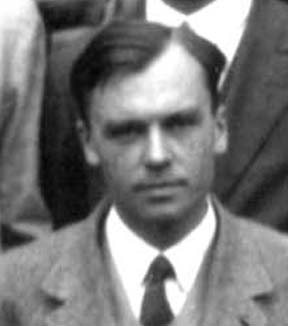


 تاريخ الرياضيات
تاريخ الرياضيات
 الرياضيات في الحضارات المختلفة
الرياضيات في الحضارات المختلفة 
 الرياضيات المتقطعة
الرياضيات المتقطعة
 الجبر
الجبر
 الهندسة
الهندسة 
 المعادلات التفاضلية و التكاملية
المعادلات التفاضلية و التكاملية 
 التحليل
التحليل
 علماء الرياضيات
علماء الرياضيات |
Read More
Date: 6-9-2017
Date: 21-9-2017
Date: 12-9-2017
|
Died: 2 December 1982 in Auckland, New Zealand

Geoffrey Timms's father was Frederick Timms (born in Leeds, Yorkshire in 1865; died 1947) who was a Managing Director Ltd Co. of a rope and twine company. His mother was Clare Louisa Barraclough (born in Leeds, Yorkshire, in 1867; died 1946). Geoffrey Timms had a younger brother Alan (born about 1905).
Geoffrey Timms was an undergraduate at the University of Leeds, graduating with First Class honours in mathematics in 1925. Timms then went to Cambridge where his doctoral work was supervised by H F Baker. After being awarded a Ph.D. in 1928 Timms was appointed as Assistant in H W Turnbull's department in St Andrews in October 1929.
Timms remained at St Andrews being appointed as a Lecturer in Mathematics in 1935. During World War II Timms served at Bletchley Park, and was then sent to Cheltenham to use his mathematical skills to assist engineers and physicists. Timms retained his post in St Andrews until September 1945 when he resigned, deciding to remain with the Foreign Office for the rest of his career. He continued to work for the Foreign Office until 1968.
From February 1929, before taking up his position as an assistant in St Andrews, Timms joined the Edinburgh Mathematical Society. He was honoured by the Society by being elected as president for session 1941-42. He was elected to the Royal Society of Edinburgh on 6 March 1933, his proposers being Herbert Westren Turnbull, Edward Thomas Copson, Alexander Craig Aitken,Sir Edmund T Whittaker.
An obituary, written by W L Edge, appears in the Royal Society of Edinburgh Year Book 1984, page 213.
We give a version of this obituary at THIS LINK.
As an example of Timms' papers, he published On the highest space in which a non-ruled surface of given order can lie in 1940. T R Hollcroft writes:-
More than a half century ago, del Pezzo showed that a non-ruled algebraic surface of order n lies in a space of maximum dimension R such that R = n for n ≤ 9, n ≠ 4, and R < n for n ≥ 10. In the present paper, the exact value of R for a given n is found to be R = I(3n/4) + 2, n ≠ 1, 2, 3, 9, where I(x)denotes the integral part of x. An example is given of a rational surface of order n for which the maximum value R is attained.



|
|
|
|
دراسة تحدد أفضل 4 وجبات صحية.. وأخطرها
|
|
|
|
|
|
|
جامعة الكفيل تحتفي بذكرى ولادة الإمام محمد الجواد (عليه السلام)
|
|
|